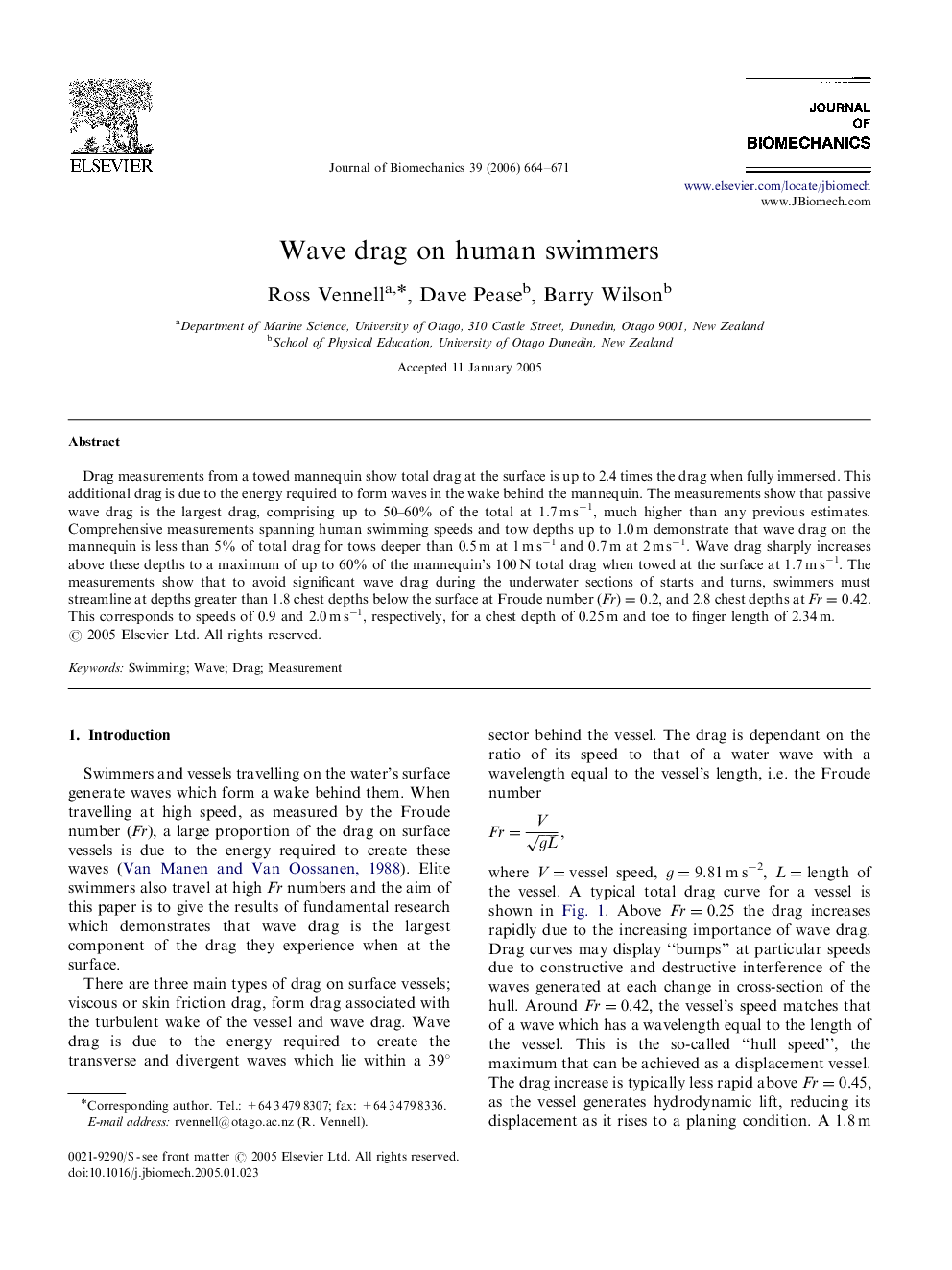| Article ID | Journal | Published Year | Pages | File Type |
|---|---|---|---|---|
| 875193 | Journal of Biomechanics | 2006 | 8 Pages |
Drag measurements from a towed mannequin show total drag at the surface is up to 2.4 times the drag when fully immersed. This additional drag is due to the energy required to form waves in the wake behind the mannequin. The measurements show that passive wave drag is the largest drag, comprising up to 50–60% of the total at 1.7 m s−1, much higher than any previous estimates. Comprehensive measurements spanning human swimming speeds and tow depths up to 1.0 m demonstrate that wave drag on the mannequin is less than 5% of total drag for tows deeper than 0.5 m at 1 m s−1 and 0.7 m at 2 m s−1. Wave drag sharply increases above these depths to a maximum of up to 60% of the mannequin's 100 N total drag when towed at the surface at 1.7 m s−1. The measurements show that to avoid significant wave drag during the underwater sections of starts and turns, swimmers must streamline at depths greater than 1.8 chest depths below the surface at Froude number (Fr)=0.2, and 2.8 chest depths at Fr=0.42. This corresponds to speeds of 0.9 and 2.0 m s−1, respectively, for a chest depth of 0.25 m and toe to finger length of 2.34 m.
